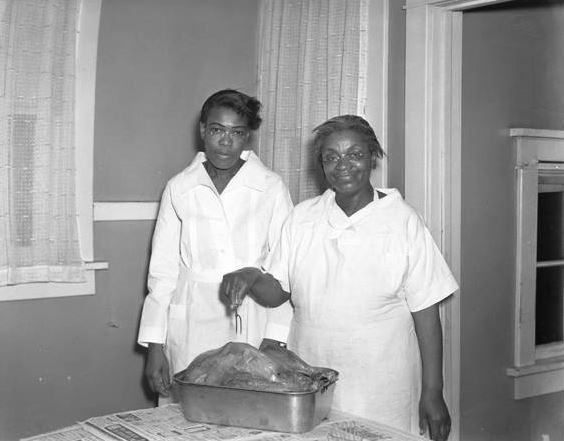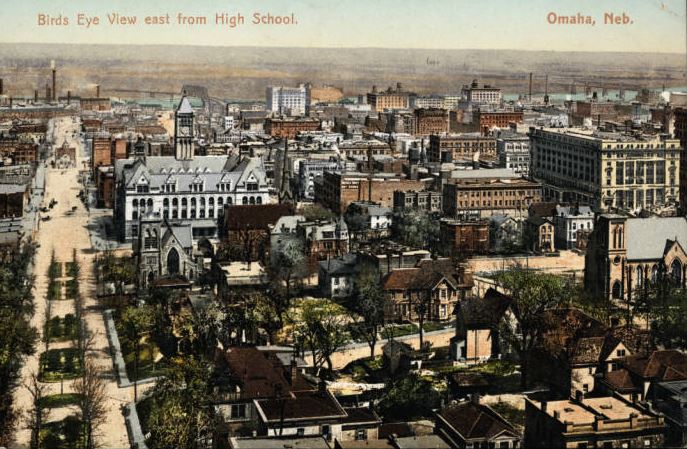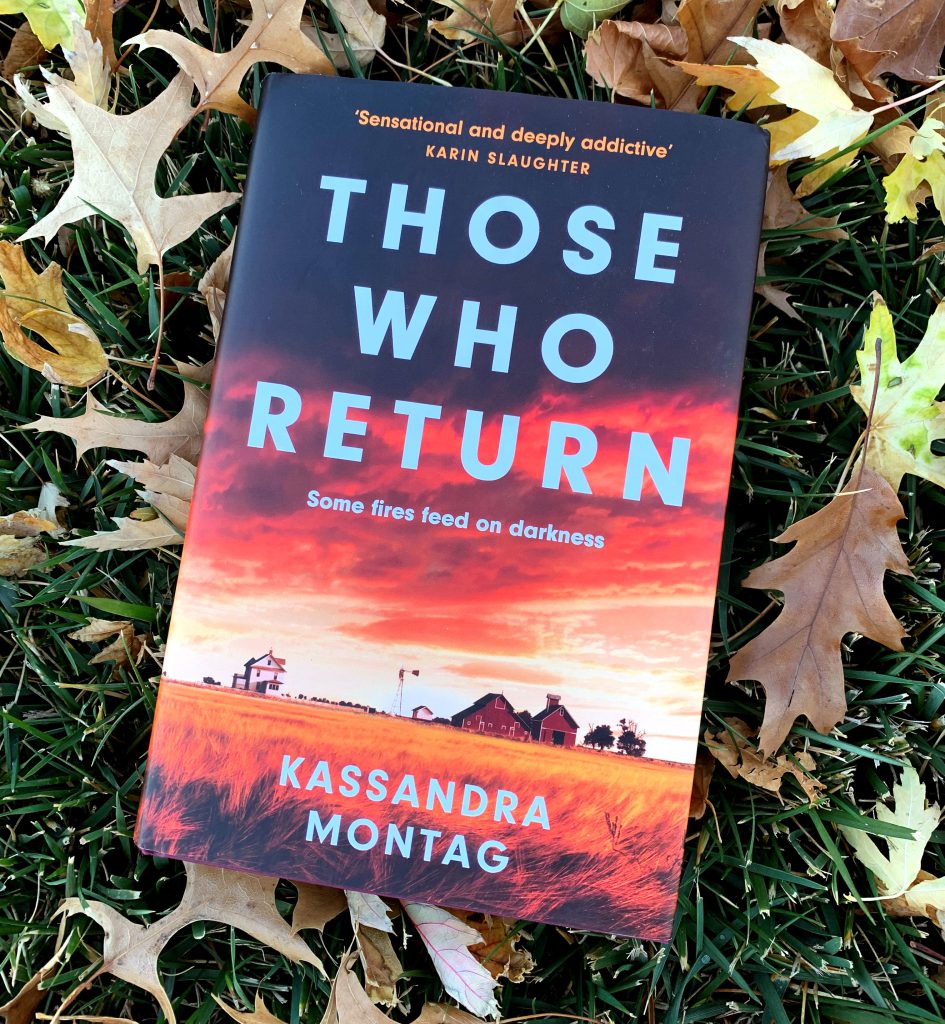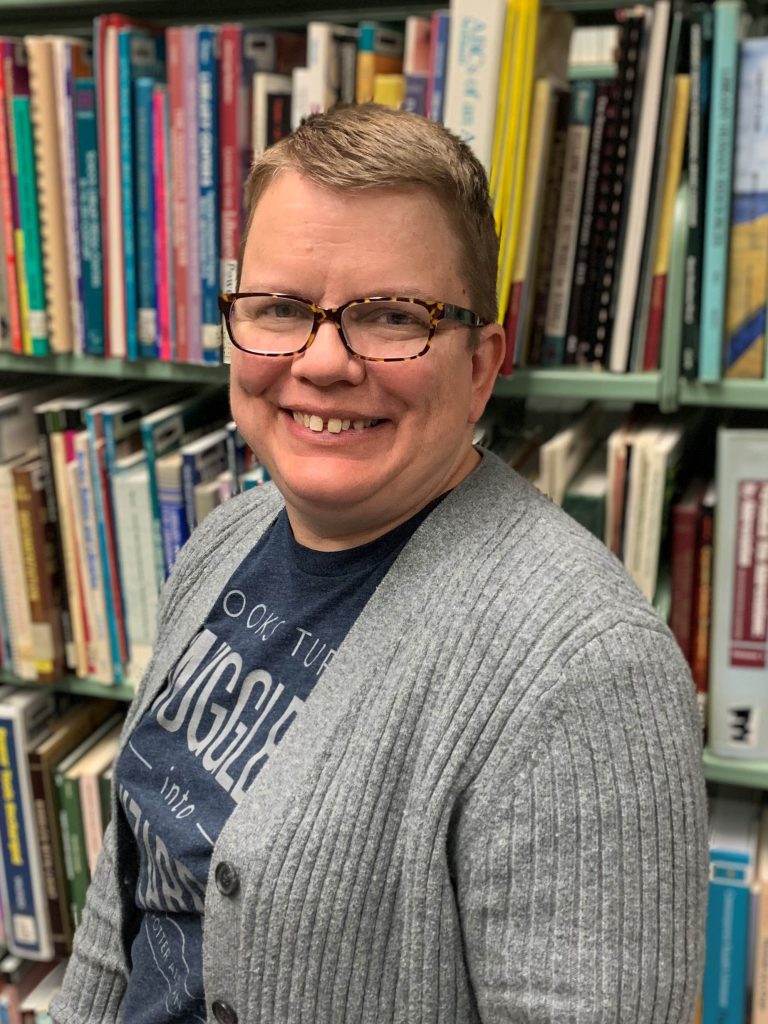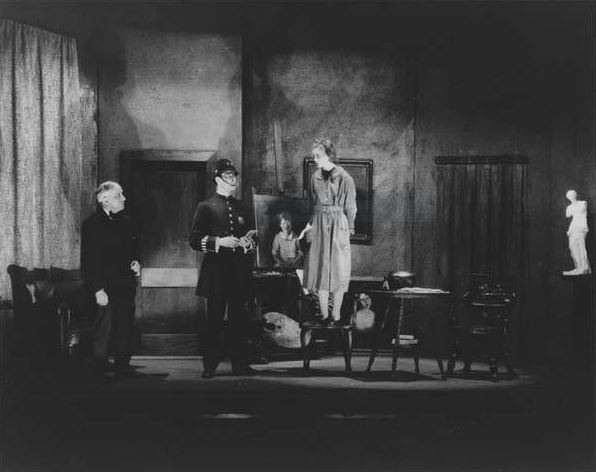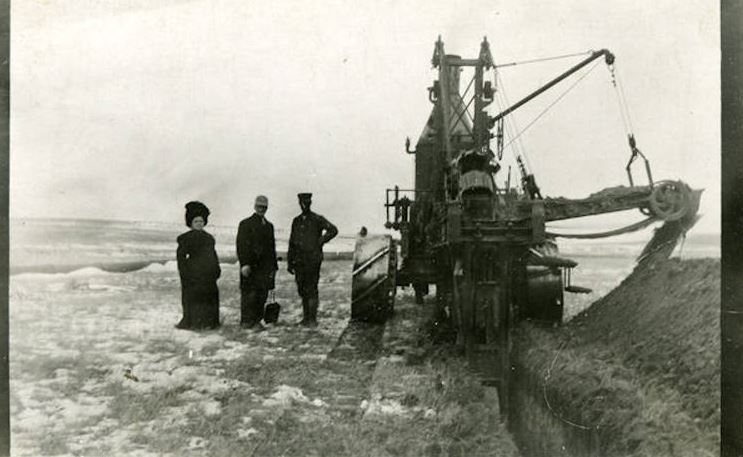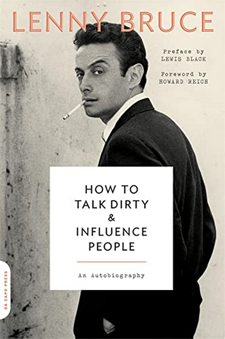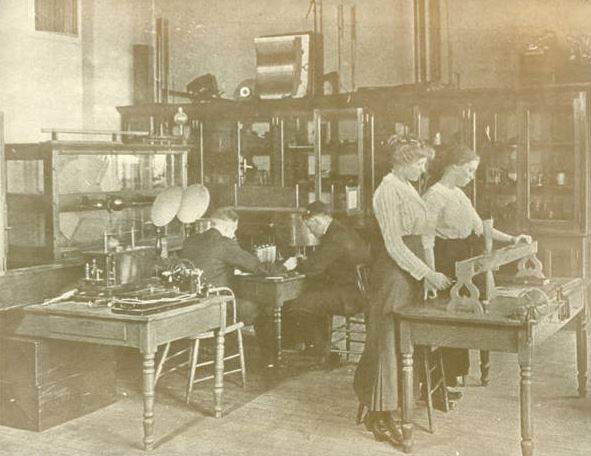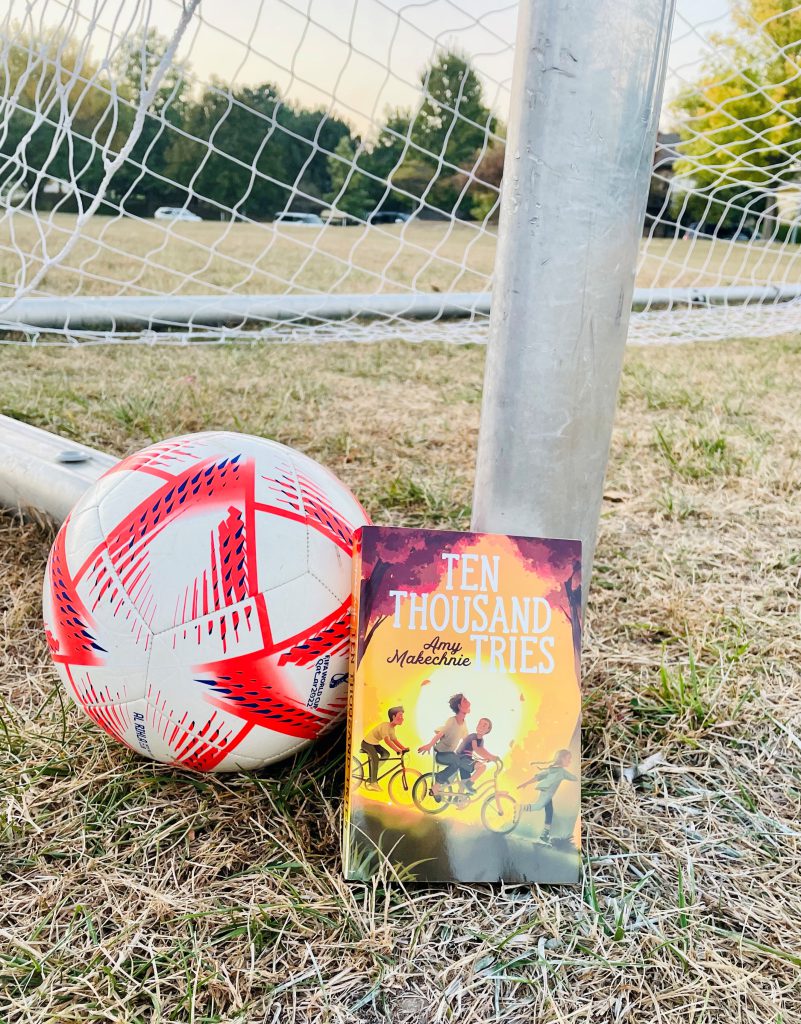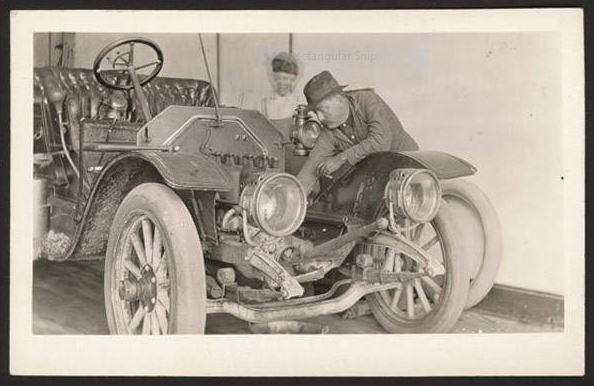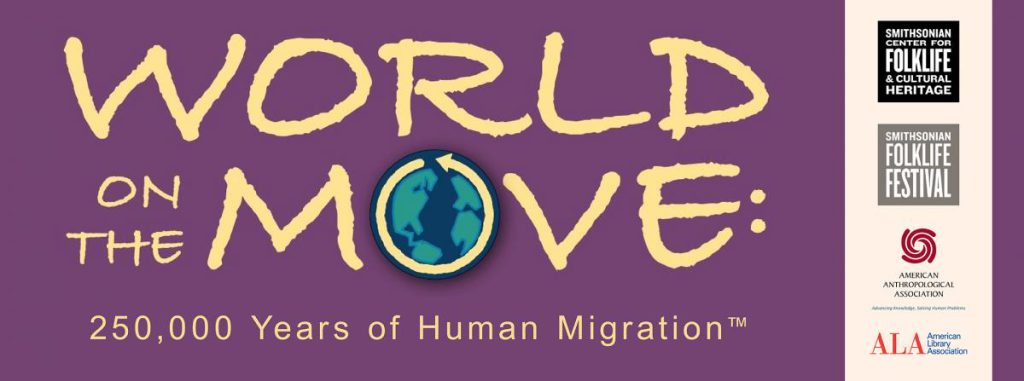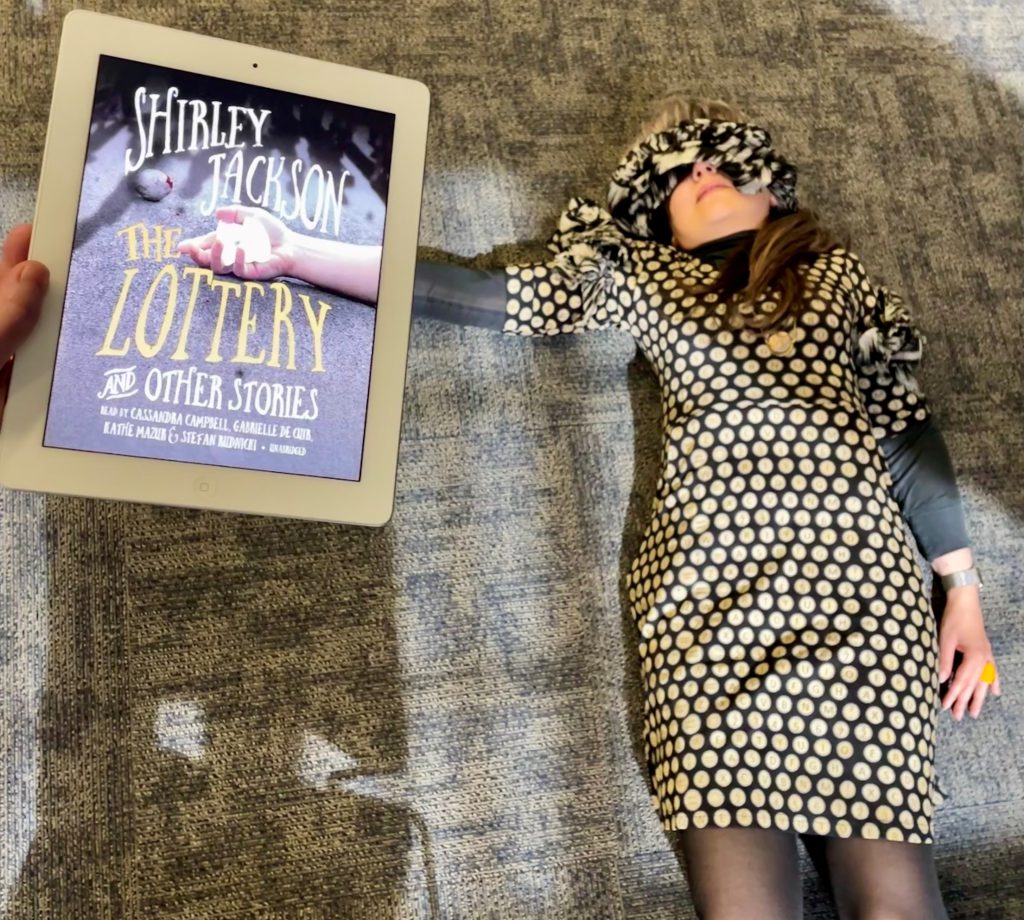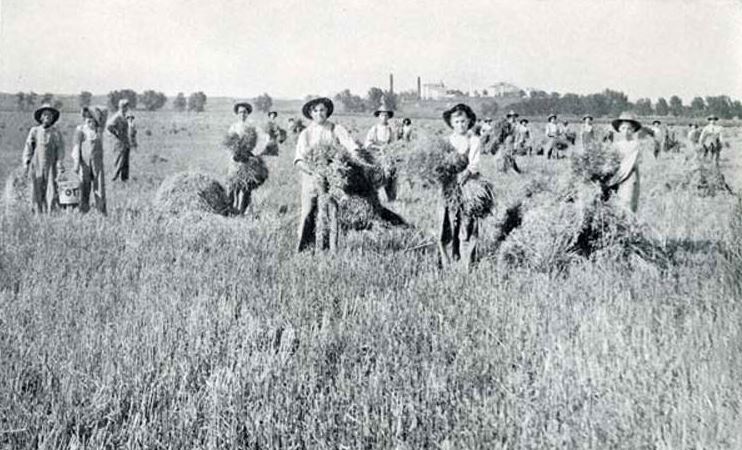Search the Blog
Categories
- Books & Reading
- Broadband Buzz
- Census
- Education & Training
- Friday Reads
- General
- Grants
- Information Resources
- Library Management
- Nebraska Center for the Book
- Nebraska Libraries on the Web
- Nebraska Memories
- Now hiring @ your library
- Preservation
- Pretty Sweet Tech
- Programming
- Public Library Boards of Trustees
- Public Relations
- Talking Book & Braille Service (TBBS)
- Technology
- Uncategorized
- What's Up Doc / Govdocs
- Youth Services
Archives
Subscribe
Category Archives: General
Throwback Thursday: Checking the Turkey
We’re thankful it’s #ThrowbackThursday!
This week, we have a 3 5/8″ x 4 3/4″ black and white acetate negative of two women in a kitchen checking on a turkey. This image was taken in 1939 by William Wentworth. He was a freelance and commercial photographer. He provided a unique view of architecture, businesses, and community life.
This image is owned and published by The Durham Museum. The William Wentworth Collection at The Durham Museum consists of over 4,663 negatives that document life in Omaha from 1934 to 1950.
Check out the full collection on the Nebraska Memories archive!
Nebraska Memories is a cooperative project to digitize Nebraska-related historical and cultural heritage materials and make them available to researchers of all ages via the Internet. The Nebraska Memories archive is brought to you by the Nebraska Library Commission.
If your institution is interested in participating in Nebraska Memories, see http://nlc.nebraska.gov/nebraskamemories/participation.aspx for more information
#BookFaceFriday “Johnny Carson” by Henry Bushkin
Heeeeere’s #BookfaceFriday!
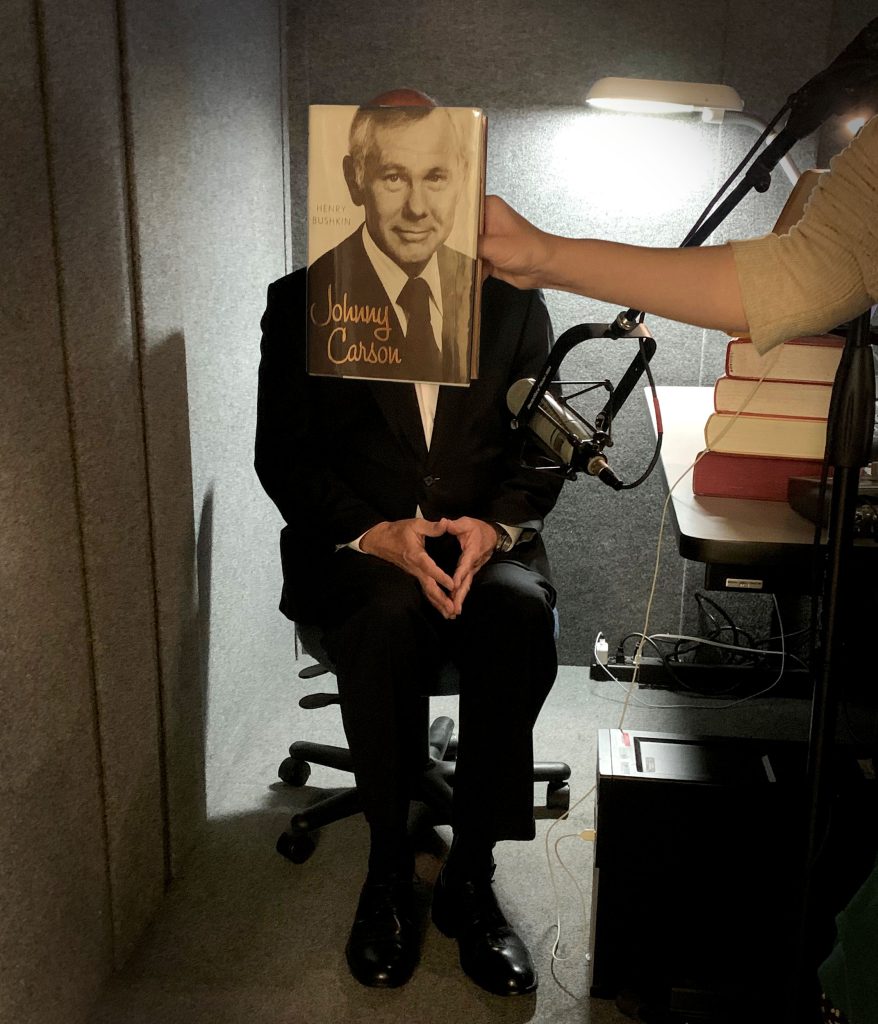
Ever wonder what the librarians at the Nebraska Library Commission do in their free time? When we aren’t ironing our cardigans or putting our grocery lists in alphabetical order (just kidding, I think?), we’re probably reading juicy celebrity biographies like this week’s BookFace selection, “Johnny Carson” by Henry Bushkin (Houghton Mifflin Harcourt, 2013). This title is also the subject of this week’s Friday Reads post, written by Information Services Director, Lisa Kelly. Library Commission staff take turns writing weekly book reviews of titles they have enjoyed (and sometimes not!) in our weekly Friday Reads series. Want to read it yourself? “Johnny Carson” is available as an ebook on Nebraska Overdrive Libraries!
“Henry Bushkin’s ‘Johnny Carson’ is that rare celebrity tell-all by an author who knows whom and what he’s talking about.”
— The New York Times
Find this title and many more through Nebraska OverDrive! Libraries participating in the Nebraska OverDrive Libraries Group currently have access to a shared and growing collection of digital downloadable audiobooks and eBooks. 189 libraries across the state share the Nebraska OverDrive collection of 21,696 audiobooks, 35,200 eBooks, and 3,964 magazines. As an added bonus it includes 130 podcasts that are always available with simultaneous use (SU), as well as SU ebooks and audiobook titles that publishers have made available for a limited time. If you’re a part of it, let your users know about this great title, and if you’re not a member yet, find more information about participating in Nebraska Overdrive Libraries!
Love this #BookFace & reading? Check out our past #BookFaceFriday photos on the Nebraska Library Commission’s Facebook page!
Posted in Books & Reading, General
Tagged Biography, bookfacefriday, Ebook, Friday Reads, Henry Bushkin, Johnny Carson, Nebraska OverDrive Libraries, OverDrive, Reading
Leave a comment
Throwback Thursday: Birds Eye View, Omaha, Neb.
Happy #ThrowbackThursday from Nebraska Memories!
This week, we have a colorized postcard view of downtown Omaha, Nebraska looking toward the east from 20th and Dodge Streets.
This image is published and owned by Omaha Public Library. Items in this collection include early Omaha-related maps dating from 1825 to 1922. Also included in this collection are photographs and postcards of the Omaha area.
See more materials like this on the Nebraska Memories archive.
Nebraska Memories is a cooperative project to digitize Nebraska-related historical and cultural heritage materials and make them available to researchers of all ages via the Internet. The Nebraska Memories archive is brought to you by the Nebraska Library Commission. If your institution is interested in participating in Nebraska Memories, see http://nlc.nebraska.gov/nebraskamemories/participation.aspx for more information.
Friday Reads: “Those Who Return” by Kassandra Montag
Set in the Sandhills of Nebraska, this mystery centers around a children’s home for troubled youths and a psychologist who is trying to start a new life. Isolated and far off the beaten path, Hatchery House, is a treatment facility for orphaned children with psychiatric disorders. Lore Webber has left a job with the FBI in Omaha and moved out west to start over, but when one of her patients at Hatchery House is found murdered her old life and her new life will collide. This closed-door murder thriller will have readers guessing until the very end. The inherent remoteness of the setting has limited the suspect pool, and no one wants to think the people they live with are capable of murder. The beautifully written descriptions of the setting honor the unique beauty and seclusion of the Sandhills. Too many people who comment on the Nebraska landscape have only ever driven through on I80, it was good to read a book that looked deeper. The characters are complex and well-written, with interesting backstories that unfold throughout the story as you work alongside Lore to solve the crime. Thoroughly well-researched and compelling, this is Montag’s second novel, her first “After the Flood” was published in 2019, and is also a favorite read of mine. I would highly recommend both.
Montag, Kassandra. Those Who Return. Quercus. 2022.
Posted in Books & Reading, General
Tagged Book Review, Friday Reads, Kassandra Montag, mystery, Reading, series, Those Who Return
Leave a comment
#BookFaceFriday “Rebel With A Clause” by Ellen Jovin
This #BookFaceFriday is something to write about!
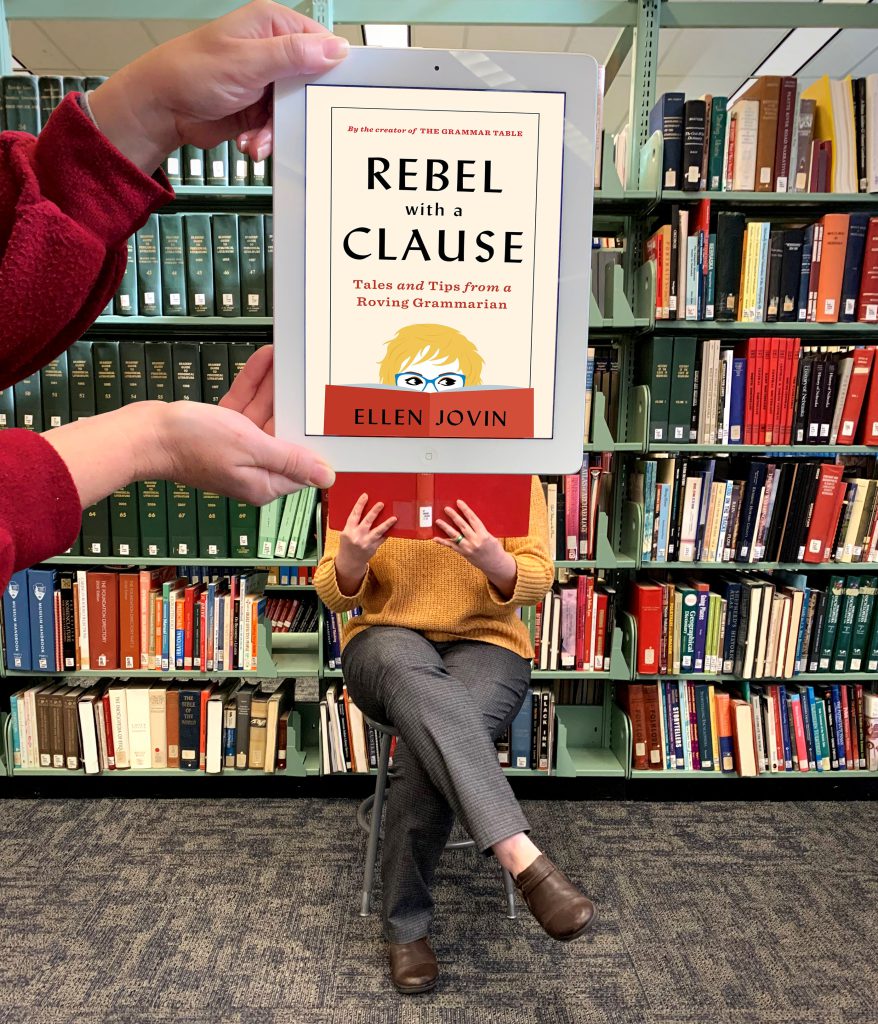
It’s November, which means it’s time for #NaNoWriMo, or National Novel Writing Month! This annual challenge to write 50,000 words of a novel has resulted in hundreds of thousands of new books since 1999. So we found this fun, literary read for this week’s #BookFaceFriday, “Rebel With A Clause: Tales and Tips from a Roving Grammarian” by Ellen Jovin (Mariner Books, 2022). It’s available as an eBook in the Nebraska OverDrive Libraries. Find it and other reads in the “Books for writers, would-be writers, and word lovers” currated collection for Nebraska OverDrive Libraries. Plus new titles, both nonfiction and fiction, are added daily to Nebraska Overdrive Libraries!
“Jovin uses a combination of intuition and established guidelines to demonstrate that there’s almost always more than one correct answer to questions of communication. Along the way, she shares funny anecdotes about the interactions at her booth and how it functioned as an outlet for individuals to passionately express their points of view…Fellow language lovers will enjoy the ride.”
―Publishers Weekly
Libraries participating in the Nebraska OverDrive Libraries Group currently have access to a shared and growing collection of digital downloadable audiobooks and eBooks. 189 libraries across the state share the Nebraska OverDrive collection of 21,696 audiobooks, 35,200 eBooks, and 3,964 magazines. As an added bonus it includes 130 podcasts that are always available with simultaneous use (SU), as well as SU ebooks and audiobook titles that publishers have made available for a limited time. If you’re a part of it, let your users know about this great title, and if you’re not a member yet, find more information about participating in Nebraska Overdrive Libraries!
Love this #BookFace & reading? Check out our past #BookFaceFriday photos on the Nebraska Library Commission’s Facebook page!
Posted in Books & Reading, General
Tagged #NaNoWriMo, Audiobook, bookface, bookfacefriday, Ebook, Ellen Jovin, Nebraska OverDrive Libraries, Reading, Rebel with a Clause
Leave a comment
Throwback Thursday: Nebraska Veterans
NLC is proud to honor Nebraska’s many Veterans with this week’s #ThrowbackThursday!
This week, we have a 7″ x 5″ black and white formal photograph featuring the first commanding officer of the Sioux Army Depot, Colonel Prebble, with his staff. The Sioux Army Depot was established on 19,771 acres west of Sidney, Nebraska in March of 1942. The depot warehoused and distributed ammunition and general supplies. It was deactivated in June of 1967.
This week’s image is published and owned by Cheyenne County Historical Society and Museum. Items in this collection represent the people and places of Sidney, Fort Sidney, Potter, Dalton and other communities and sites in the county. Images feature business districts in these towns, troops stationed at the fort, and William Jennings Bryan speaking at the Cheyenne County Court House.
If you like history, check out the Nebraska Memories archive!
Nebraska Memories is a cooperative project to digitize Nebraska-related historical and cultural heritage materials and make them available to researchers of all ages via the Internet. The Nebraska Memories archive is brought to you by the Nebraska Library Commission. If your institution is interested in participating in Nebraska Memories, see http://nlc.nebraska.gov/nebraskamemories/participation.aspx for more information.
Posted in General, Nebraska Memories, Preservation
Tagged History, Military, Nebraska History, Nebraska Memories, Throwback Thursday, Veterans, Veterans Day
Leave a comment
NLC Staff: Meet Shoshana Patocka
Get to know NLC’s Cataloging Librarian, Shoshana Patocka. Take a few minutes and get to know her with a few fun questions!
What advice would you give your 21 year old self?
Keep working towards your goal, you’ll get there eventually
What’s your ideal vacation?
Disney World
What do you do to relax?
Take bubble baths
Describe your first car
A used, white Ford Escort that I didn’t learn to drive until I was 23
If I weren’t working in a library, I’d be…
A professional organizer
What was the first concert you remember attending?
Green Day at the Ranch Bowl in Omaha
What movie can you watch over and over again?
La La Land
What was the last book you read?
The Finishing School series by Gail Carriger
What was the last movie you watched?
Return of the Jedi
What is your proudest handyman moment?
Replacing a door knob on the entrance to my duplex
What smell brings back great memories?
Cinnamon rolls and chili
If you had a warning label, what would it say?
Quiet but deadly
Do you have any tattoos?
Yes – 2 – one on my wrist and one on my leg
What is your favorite comfort food when you are sick?
Chicken noodle soup
What’s your most treasured possession?
My cat Dharma
Do you love or hate rollercoasters?
Love
Do you have any pets?
A gray and white cat named Dharma and a corgi named Charlie
What is your guilty pleasure?
Ice cream
Favorite technology that you could not live without?
My alarm clock
If you could only eat one kind of food for the rest of your life, what would it be?
Mac and cheese
If you could call anyone in the world and have a one-hour conversation, who would you call?
Carol Burnett
What do you get every time you go to the grocery store?
Choceur Peanut Butter Cups from Aldi (Sooooooo good!)
What’s Up Doc? New State Agency Publications at the Nebraska Library Commission
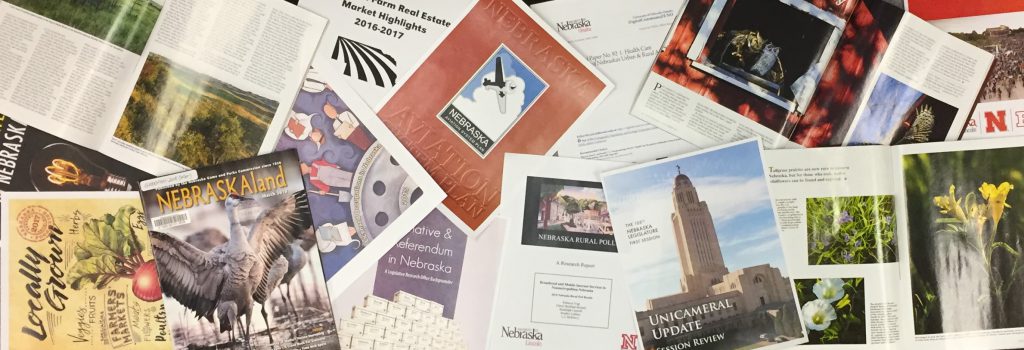
New state agency publications have been received at the Nebraska Library Commission for September and October, 2022. Included are reports from the Nebraska Department of Environment and Energy, the Nebraska Emergency Management Agency, the Nebraska Civil Defence Agency, the Nebraska Department Transportation, and new books from the University of Nebraska Press, to name a few.
Most items, except the books from the University of Nebraska Press, are available for immediate viewing and printing by clicking on the highlighted link above, or directly in the .pdf below. You can read synopses of the books received from the University of Nebraska Press in the Book Briefs blogposts.
The Nebraska Legislature created the Nebraska Publications Clearinghouse in 1972 as a service of the Nebraska Library Commission. Its purpose is to collect, preserve, and provide access to all public information published by Nebraska state agencies. By law (State Statutes 51-411 to 51-413) all Nebraska state agencies are required to submit their published documents to the Clearinghouse. For more information, visit the Nebraska Publications Clearinghouse page, contact Mary Sauers, Government Information Services Librarian; or contact Bonnie Henzel, State Documents Staff Assistant.
Book Briefs: New University of Nebraska Press Books at the Nebraska Publications Clearinghouse
The Nebraska Publications Clearinghouse receives documents every month from all Nebraska state agencies, including the University of Nebraska Press (UNP). Each month we will be showcasing the UNP books that the Clearinghouse has received.
UNP books, as well as all Nebraska state documents, are available for checkout by libraries and librarians for their patrons.
Here are the UNP books the Clearinghouse received in September and October, 2022:
An Evolving Vision : The James Collection, 1997-2022, by Carolyn Ducey, Marin F. Hanson, and Penny McMorris.
In 2022 the International Quilt Museum (IQM) at the University of Nebraska–Lincoln celebrates a quarter century of studying, preserving, and exhibiting the Ardis and Robert James Collection. The Jameses’ donation of their unparalleled one-thousand-piece collection in 1997 established the IQM and formed the solid base from which the museum has steadily grown. Today, the museum’s collection includes more than six thousand quilts from five different centuries and over fifty countries, an expansion that has been encouraged by the James family, who continue to support the museum’s efforts to represent global quiltmaking.
This companion publication to the exhibition An Evolving Vision, 1997–2022 highlights important pieces from various segments of the collection: Classics—stunning antique American quilts; From the Studio—early and innovative art pieces; and New Horizons—quilt traditions from around the world. This book also includes a comprehensive catalog of the James Collection, comprising the quilts from the original 1997 gift as well as important groups given to the IQM in 2006 and 2009. An Evolving Vision documents the significance of the James Collection and underscores the broad vision its collectors developed not only for themselves but for the museum they so vitally helped shape.
The Enlightened Patrolman : Early Law Enforcement in Mexico City, by Nicole von Germeten; Series: Confluencias
When late eighteenth-century New Spanish viceregal administrators installed public lamps in the streets of central Mexico City, they illuminated the bodies of Indigenous, Afro-descended, and plebeian Spanish urbanites. The urban patrolmen, known as guarda faroleros, or “lantern guards,” maintained the streetlamps and attempted to clear the streets of plebeian sexuality, embodiment, and sociability, all while enforcing late colonial racial policies amid frequent violent resistance from the populace.
In The Enlightened Patrolman Nicole von Germeten guides readers through Mexico City’s efforts to envision and impose modern values as viewed through the lens of early law enforcement, an accelerated process of racialization of urban populations, and burgeoning ideas of modern masculinity. Germeten unfolds a tale of the losing struggle for elite control of the city streets. As surveillance increased and the populace resisted violently, a pause in the march toward modernity ensued. The Enlightened Patrolman presents an innovative study on the history of this very early law enforcement corps, providing new insight into the history of masculinity and race in Mexico, as well as the eighteenth-century origins of policing in the Americas.
Imperial Zions : Religion, Race, and Family in the American West and the Pacific, by Amanda Hendrix-Komoto; Series: Studies in Pacific Worlds
In the nineteenth century, white Americans contrasted the perceived purity of white, middle-class women with the perceived eroticism of women of color and the working classes. The Latter-day Saint practice of polygamy challenged this separation, encouraging white women to participate in an institution that many people associated with the streets of Calcutta or Turkish palaces. At the same time, Latter-day Saints participated in American settler colonialism. After their expulsion from Ohio, Missouri, and Illinois, Latter-day Saints dispossessed Ute and Shoshone communities in an attempt to build their American Zion. Their missionary work abroad also helped to solidify American influence in the Pacific Islands as the church became a participant in American expansion.
Imperial Zions explores the importance of the body in Latter-day Saint theology with the faith’s attempts to spread its gospel as a “civilizing” force in the American West and the Pacific. By highlighting the intertwining of Latter-day Saint theology and American ideas about race, sexuality, and the nature of colonialism, Imperial Zions argues that Latter-day Saints created their understandings of polygamy at the same time they tried to change the domestic practices of Native Americans and other Indigenous peoples. Amanda Hendrix-Komoto tracks the work of missionaries as they moved through different imperial spaces to analyze the experiences of the American Indians and Native Hawaiians who became a part of white Latter-day Saint families. Imperial Zions is a foundational contribution that places Latter-day Saint discourses about race and peoplehood in the context of its ideas about sexuality, gender, and the family.
Living Room, by Laura Bylenok; Series: The Backwaters Prize in Poetry
Deeply phenomenological and ecological, Laura Bylenok’s poems in Living Room imagine the lived reality of other organisms and kinds of life, including animals, plants, bacteria, buildings, and rocks. They explore the permeability of human and nonhuman experience, intelligence, language, and subjectivity. In particular, the poems consider so-called model organisms—nonhuman species studied to understand specific and often human biological processes, diseases, and phenomena—as well as an experience of self and world that cannot be objectively quantified. The impulse of these poems is to slow down, to see and feel, and to listen closely. Language becomes solid, palpable as fruit. Long lines propel breath and push past the lung’s capacity.
Life at a cellular level, synthesis and symbiosis, is revealed through forests, fairy tales, and vines that grow over abandoned houses and hospital rooms. A living room is considered as a room that is lived in and also a room that is alive. Cells are living rooms. A self is a room that shares walls with others. Interconnection and interplay are thematic, and the network of poems becomes a linguistic rendering of a heterogeneous and nonhierarchical ecosystem, using the language of biology, genetics, and neurochemistry alongside fairy tale and dream to explore the interior spaces of grief, motherhood, mortality, and self.
Might Kindred, by Monica Gomery; Series: The Raz/Shumaker Prairie Schooner Book Prize in Poetry
The poems of Might Kindred wonder aloud: can we belong to one another, and “can a people belong to a dreaming machine?” Conjuring mountains and bodies of water, queer and immigrant poetics, beloveds both human and animal, Mónica Gomery explores the intimately personal and the possibility of a collective voice. Here anthems are sung and fall apart midsong. The speaker exchanges letters with her ancestors, is visited by a shadow sister, and interrogates what it means to make a home as a first-generation American.
Winner of the Raz/Shumaker Prairie Schooner Book Prize in Poetry, the poems in Might Kindred are rooted in the body and its cousins, seeking the possibility of kinship, “in case we might kindness, might ardor together.” Belonging and unbelonging are claimed as part of the same complicated whole, and Gomery’s intersections reach for something divine at the center.
Nez Perce Summer, 1877 : The U.S. Army and the Nee-Me-Poo Crisis, by Jerome A. Greene
Nez Perce Summer, 1877 tells the story of a people’s epic struggle to survive spiritually, culturally, and physically in the face of unrelenting military force. Written by one of the foremost experts in frontier military history, Jerome A. Greene, and reviewed by members of the Nez Perce tribe, this definitive treatment of the Nez Perce War is the first to incorporate research from all known accounts of Nez Perce and U.S. military participants.
Enhanced by sixteen detailed maps and forty-nine historic photographs, Greene’s gripping narrative takes readers on a three-and-one-half month 1,700-mile journey across the wilds of Idaho, Wyoming, and Montana territories. All of the skirmishes and battles of the war receive detailed treatment, which benefits from Greene’s astute analysis of the strategies and decision making on both sides.
Between 100 and 150 of the more than 800 Nez Perce men, women, and children who began the trek were killed during the war. Almost as many died in the months following the surrender, after they were exiled to malaria-ridden northeastern Oklahoma. Army deaths numbered 113. The casualties on both sides were an extraordinary price for a war that nobody wanted but whose history has since fascinated generations of Americans.
The North American West in the Twenty-First Century, edited by Brenden W. Rensink
In 1893 Frederick Jackson Turner famously argued that the generational process of meeting and conquering the supposedly uncivilized western frontier is what forged American identity. In the late twentieth century, “new western” historians dissected the mythologized western histories that Turner and others had long used to embody American triumph and progress. While Turner’s frontier is no more, the West continues to present America with challenging processes to wrestle, navigate, and overcome.
The North American West in the Twenty-First Century, edited by Brenden W. Rensink, takes stories of the late twentieth-century “modern West” and carefully pulls them toward the present—explicitly tracing continuity with or unexpected divergence from trajectories established in the 1980s and 1990s. Considering a broad range of topics, including environment, Indigenous peoples, geography, migration, and politics, these essays straddle multiple modern frontiers, not least of which is the temporal frontier between our unsettled past and uncertain future. These forays into the twenty-first-century West will inspire more scholars to pull histories to the present and by doing so reinsert scholarly findings into contemporary public awareness.
The Old Iron Road : An Epic of Rails, Roads, and the Urge to Go West, by David Haward Bain
In the summer of 2000 David Haward Bain and his family left their home in Vermont and headed west in search of America’s past. Spiritually, their journey began on a Kansas trail where the author’s grandmother was born in a covered wagon in 1889. Between the Missouri River and the Golden Gate, they retraced the entire route of the first transcontinental railroad and large stretches of the Oregon and California trails, and the equally colorful old Lincoln Highway. Following vanished iron rails and wagon wheel ruts, bumping down backroads and main streets, they discovered the deep, restless, uniquely American spirit of adventure that connects our past to our present.
A superb writer and an exacting researcher, Bain conjures up a marvelous sense of coming unstuck in time as he lingers in the ghost towns and battlegrounds, prairies and river ports, trainyards, museums, deserts, and diners that line his cruise west to California. Bain encounters a fascinating cast of characters, both historic and contemporary, as well as memories of his grandparents and the journeys that shaped his own heritage.
Writing in the tradition of William Least Heat-Moon and Ian Frazier, and with an engaging warmth and a deep grasp of history all his own, Bain has fashioned a quintessentially American journey.
Outback & Out West : The Settler-Colonial Environmental Imaginery, by Tom Lynch.
Outback and Out West examines the ecological consequences of a settler-colonial imaginary by comparing expressions of settler colonialism in the literature of the American West and Australian Outback. Tom Lynch traces exogenous domination in both regions, which resulted in many similar means of settlement, including pastoralism, homestead acts, afforestation efforts, and bioregional efforts at “belonging.” Lynch pairs the two nations’ texts to show how an analysis at the intersection of ecocriticism and settler colonialism requires a new canon that is responsive to the social, cultural, and ecological difficulties created by settlement in the West and Outback.
Outback and Out West draws out the regional Anthropocene dimensions of settler colonialism, considering such pressing environmental problems as habitat loss, groundwater depletion, and mass extinctions. Lynch studies the implications of our settlement heritage on history, art, and the environment through the cross-national comparison of spaces. He asserts that bringing an ecocritical awareness to settler-colonial theory is essential for reconciliation with dispossessed Indigenous populations as well as reparations for ecological damages as we work to decolonize engagement with and literature about these places.
Paternalism to Partnership : The Administration of Indian Affairs, 1786-2021, by David H. DeJong
Paternalism to Partnership examines the administration of Indian affairs from 1786, when the first federal administrator was appointed, through 2021. David H. DeJong examines each administrator through a biographical sketch and excerpts of policy statements defining the administrator’s political philosophy, drawn from official reports or the administrator’s own writings.
The Indian Office, as an executive agency under the secretary of war (1789 to 1849) and secretary of the interior (1849 to present), was directed by the president of the United States. The superintendents, chief clerks, commissioners, and assistant secretaries for Indian affairs administered policy as prescribed by Congress and the president. Each was also given a level of discretion in administering this policy. For most of the federal-Indian relationship, administrators were limited in influencing policy. This paternalism continued well into the twentieth century. Beginning in the 1960s Congress and the president ameliorated their views on the federal-Indian relationship and moved away from paternalism. Since 1966 every administrator of the Bureau of Indian Affairs has been Native American, and each has exercised increasing authority in shaping policy. This has given rise to a federal-Indian partnership that has witnessed tribal nations again exercising their inherent rights of self-government.
In this documentary history David H. DeJong follows the progression of federal Indian policy over more than two hundred years, providing firsthand accounts of how the federal-Indian relationship has changed over the centuries.
The Settler Sea : California’s Salton Sea and the Consequences of Colonialism, by Traci Brynne Voyles
2022 WHA Caughey Western History Prize for the most distinguished book on the American West
Can a sea be a settler? What if it is a sea that exists only in the form of incongruous, head-scratching contradictions: a wetland in a desert, a wildlife refuge that poisons birds, a body of water in which fish suffocate? Traci Brynne Voyles’s history of the Salton Sea examines how settler colonialism restructures physical environments in ways that further Indigenous dispossession, racial capitalism, and degradation of the natural world. In other words, The Settler Sea asks how settler colonialism entraps nature to do settlers’ work for them.
The Salton Sea, Southern California’s largest inland body of water, occupies the space between the lush agricultural farmland of the Imperial Valley and the austere desert called “America’s Sahara.” The sea sits near the boundary between the United States and Mexico and lies at the often-contested intersections of the sovereign lands of the Torres Martinez Desert Cahuilla and the state of California. Created in 1905, when overflow from the Colorado River combined with a poorly constructed irrigation system to cause the whole river to flow into the desert, this human-maintained body of water has been considered a looming environmental disaster.
The Salton Sea’s very precariousness—the way it sits uncomfortably between worlds, existing always in the interstices of human and natural influences, between desert and wetland, between the skyward pull of the sun and the constant inflow of polluted water—is both a symptom and symbol of the larger precariousness of settler relationships to the environment, in the West and beyond. Voyles provides an innovative exploration of the Salton Sea, looking to the ways the sea, its origins, and its role in human life have been vital to the people who call this region home.
Standing Bear’s Quest for Freedom : The First Civil Rights Victory for Native Americans, by Lawrence A. Dwyer
Chief Standing Bear of the Ponca Nation faced arrest for leaving the U.S. government’s reservation, without its permission, for the love of his son and his people. Standing Bear fought for his freedom not through armed resistance but with bold action, strong testimony, and heartfelt eloquence. He knew he and his people had suffered a great injustice.
Standing Bear wanted the right to live and die with his family on the beloved land of his Ponca ancestors, located within the Great Plains of Nebraska. In telling his story, Standing Bear’s Quest for Freedom relates an unprecedented civil rights victory for Native Americans: for the first time, in 1879, a federal court declared a Native American to be a “person”—a human being with the right to file an action for a redress of grievances in a federal court, like every other person in the United States.
Standing Bear’s victory in Standing Bear v. Crook began a national movement of reforming Native American rights—albeit a slow one. Because of the courage and leadership of Chief Standing Bear, the pervasive spirit of indifference of most Americans toward Native Americans was disrupted by this historic decision. America would never be the same.
Strength From the Waters : A History of Indigenous Mobilization in Northwest Mexico, by James V. Mestaz
Strength from the Waters is an environmental and social history that frames economic development, environmental concerns, and Indigenous mobilization within the context of a timeless issue: access to water. Between 1927 and 1970 the Mayo people—an Indigenous group in northwestern Mexico—confronted changing access to the largest freshwater source in the region, the Fuerte River.
In Strength from the Waters James V. Mestaz demonstrates how the Mayo people used newly available opportunities such as irrigation laws, land reform, and cooperatives to maintain their connection to their river system and protect their Indigenous identity. By using irrigation technologies to increase crop production and protect lands from outsiders trying to claim it as fallow, the Mayo of northern Sinaloa simultaneously preserved their identity by continuing to conduct traditional religious rituals that paid homage to the Fuerte River. This shift in approach to both new technologies and natural resources promoted their physical and cultural survival and ensured a reciprocal connection to the Fuerte River, which bound them together as Mayo.
Mestaz examines this changing link between hydraulic technology and Mayo tradition to reconsider the importance of water in relation to the state’s control of the river and the ways the natural landscape transformed relations between individuals and the state, altering the social, political, ecological, and ethnic dynamics within several Indigenous villages. Strength from the Waters significantly contributes to contemporary Mexicanist scholarship by using an environmental and ethnohistorical approach to water access, Indigenous identity, and natural resource management to interrogate Mexican modernity in the twentieth century.
There Where It’s So Bright in Me, by Tanella Boni; Series: African Poetry Book
There Where It’s So Bright in Me pries at the complexities of difference—race, religion, gender, nationality—that shape twenty-first-century geopolitical conditions. With work spanning more than thirty-five years and as one of the most prominent figures in contemporary African literature, Tanella Boni is uniquely positioned to test the distinctions of self, other, and belonging. Two twenty-first-century civil wars have made her West African home country of Côte d’Ivoire unstable. Abroad in the United States, Boni confronts the racialized violence that accompanies the idea of Blackness; in France, a second home since her university days, Boni encounters the nationalism roiling much of Europe as the consequences of (neo)colonialism shift the continent’s ethnic and racial profile.
What would it mean for the borders that segregate—for these social, political, cultural, personal, and historicizing forces that enshroud us—to lose their dominion? In a body under constant threat, how does the human spirit stay afloat? Boni’s poetry is characterized by a hard-earned buoyancy, given her subject matter. Her empathy, insight, and plainspoken address are crucial contributions to the many difficult contemporary conversations we must engage.
**Pictures and Synopses courtesy of University of Nebraska Press.
#BookFaceFriday “Liar Temptress Soldier Spy” by Karen Abbott
I spy with my little eye a #BookFaceFriday!
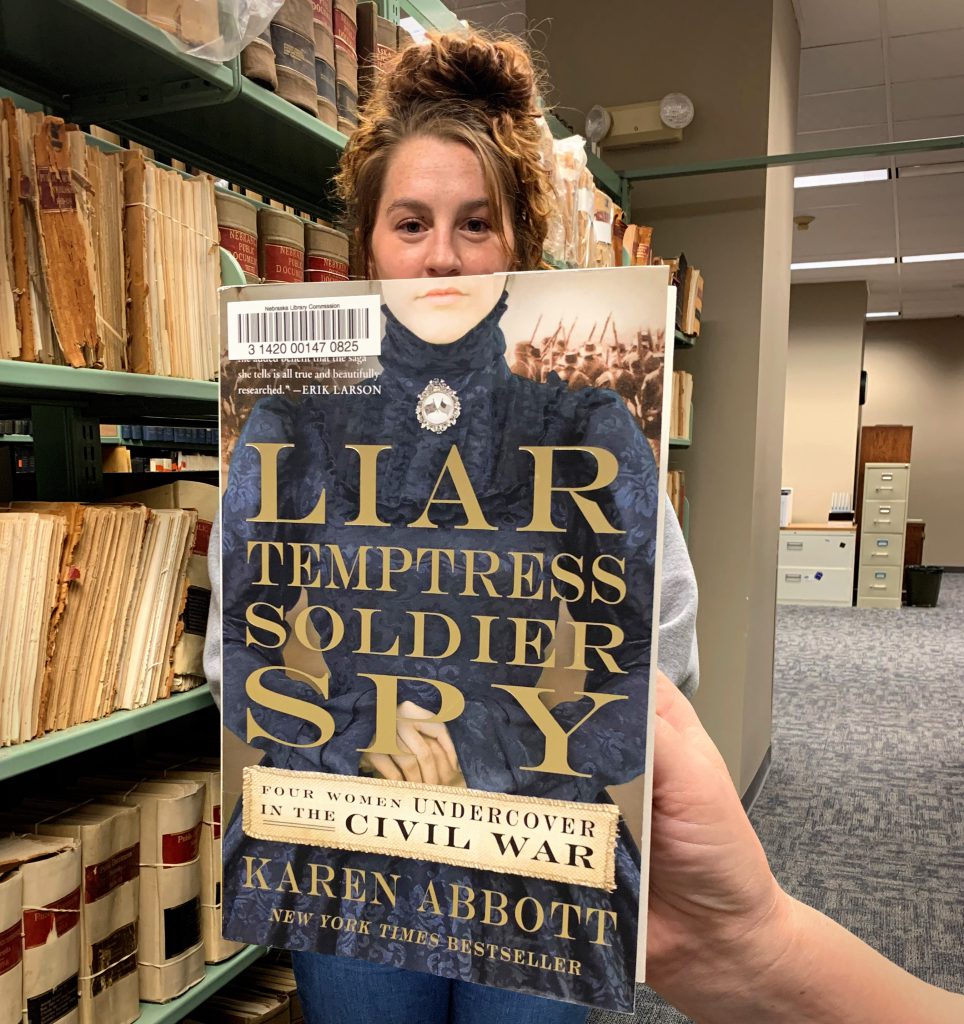
Come in from the cold with this week’s #BookFace. This one’s for all the spy novel fans out there. Even better is a true story about the incredible female spies of the Civil War, like “Liar Temptress Soldier Spy” by Karen Abbott (Harper Perennial, 2015), available as an NLC Book Club Kit. You can also find this title through Nebraska OverDrive Libraries, we have copies in both eBook and Audiobook. If you’re a fan of Kate Quinn and John le Carré, this is the read for you. Add it to your to-be-read list today!
“Not for nothing has Abbott been called a ‘pioneer of sizzle history.’ Here she creates a gripping page-turner that moves at a breathtaking clip through the dramatic events of the Civil War.”
— Los Angeles Times
Book Club Kits Rules for Use
- These kits can be checked out by the librarians of Nebraska libraries and media centers.
- Circulation times are flexible and will be based upon availability. There is no standard check-out time for book club kits.
- Please search the collection to select items you wish to borrow and use the REQUEST THIS KIT icon to borrow items.
- Contact the Information Desk at the Library Commission if you have any questions: by phone: 800/307-2665, or by email: Information Services Team
Find this title and many more through Nebraska OverDrive! Libraries participating in the Nebraska OverDrive Libraries Group currently have access to a shared and growing collection of digital downloadable audiobooks and eBooks. 189 libraries across the state share the Nebraska OverDrive collection of 21,696 audiobooks, 35,200 eBooks, and 3,964 magazines. As an added bonus it includes 130 podcasts that are always available with simultaneous use (SU), as well as SU ebooks and audiobook titles that publishers have made available for a limited time. If you’re a part of it, let your users know about this great title, and if you’re not a member yet, find more information about participating in Nebraska Overdrive Libraries!
Love this #BookFace & reading? Check out our past #BookFaceFriday photos on the Nebraska Library Commission’s Facebook page!
Throwback Thursday: “A Kiss for Cinderella”
Happy #ThrowbackThursday from Nebraska Memories!
This week, we have an 8″ x 10″ black and white photograph of Henry Fonda and thirteen-year-old Dorothy McGuire in the Omaha Community Playhouse’s production of J. M. Barrie’s “A Kiss for Cinderella”. Henry Fonda debuted on the Omaha Community Playhouse stage in 1925. He returned to Omaha in 1930, specifically to appear in “A Kiss for Cinderella” for which he also designed all of the sets. The production ran from April 28 through May 3, 1930.
This week’s image is published and owned by the Omaha Community Playhouse. The Omaha Community Playhouse collection includes digitized images of the Playhouse and some of its performances.
Check it out on the Nebraska Memories archive.
Nebraska Memories is a cooperative project to digitize Nebraska-related historical and cultural heritage materials and make them available to researchers of all ages via the Internet. The Nebraska Memories archive is brought to you by the Nebraska Library Commission. If your institution is interested in participating in Nebraska Memories, see http://nlc.nebraska.gov/nebraskamemories/participation.aspx for more information.
Throwback Thursday: Trenching
Happy #ThrowbackThursday from Nebraska Memories!
This week’s photograph shows a steam-powered trencher digging a trench for the Crawford waterworks. Trenching was dug for pipes from the Crawford Reservoir about 7 miles southwest of the town in 1907.
This image is owned by the Crawford Historical Society and Museum. It is published by Crawford Public Library. This collection includes portraits of Crawford residents, photographs of local businesses, and souvenir postcards.
Check out this collection and many more on the Nebraska Memories archive.
Nebraska Memories is a cooperative project to digitize Nebraska-related historical and cultural heritage materials and make them available to researchers of all ages via the Internet. The Nebraska Memories archive is brought to you by the Nebraska Library Commission. If your institution is interested in participating in Nebraska Memories, see http://nlc.nebraska.gov/nebraskamemories/participation.aspx for more information.
Friday Reads: How to Talk Dirty and Influence People
“All great truths begin as blasphemies.”
–George Bernard Shaw
“Powerful people and popular ideas don’t need First Amendment protections; marginalized people and unpopular ideas do.”
–Nadine Strossen, former ACLU president (1991-2008), Senior Fellow, FIRE
During a time where free speech assaults are now taking place on behalf of both the political right and the left (nothing new to see here, folks), it’s interesting to take a look at this classic autobiography from Lenny Bruce. How to Talk Dirty & Influence People is a take on Dale Carnegie’s How to Win Friends & Influence People, and describes the life of Bruce from his childhood up to the time of his premature death at the age of 40. Born in Mineola, NY, Bruce’s parents divorced when he was 10, and during his childhood he spent time living and working on a farm in Wantagh, NY. Bruce joined the Navy at the age of 16 in 1942, serving in WW2. After appearing in drag for a comedy bit, he convinced his CO that he had homosexual urges and received an honorable discharge. The Max Klinger character from M*A*S*H was based on Bruce. After discharge, he went on to develop his stream of consciousness comedy routines and worked as an MC in Jazz clubs. His routines often focused on themes of race relations, organized religion, and criticism of “the establishment”. Certainly, in today’s world, most of his bits would offend damn near everyone, and there likely would be numerous calls to ban or censor him. This in fact was the case with Brandeis University, which now hosts Bruce’s audio files. Brandeis University is named after former Supreme Court Justice Louis Brandeis, champion of free speech and advocate of counter speech:
“If there be time to expose through discussion, the falsehoods and fallacies, to avert the evil by the processes of education, the remedy to be applied is more speech, not enforced silence.”
This notion seems to be forgotten or kicked to the curb in today’s world. After the audio files came in the possession of Brandeis University, Michael Weller, former graduate of Brandeis and playwright, wrote a play based on Bruce’s work, examining the ideas of free speech. Outrage over the content of the play quickly ensued, and the University promptly cancelled it. Oh, the irony. College campuses are now replete with multiple trigger warnings on practically everything, self-censorship among students for fear of repercussions, and frequent disruptions and outbursts directed at speakers who are disagreeable. They are no longer the bastions of free speech, thought, healthy debate, and exchange of ideas they once were. As Penn Jillette says:
“If college is so comfortable and safe — I’m glad I’m not there. Who wants comfortable? Who wants safe? This old piece of carny trash still wants to be pushed and challenged, and I’ve proved I can do that without college. And it’s a lot cheaper than Brandeis.”
How to Talk Dirty and Influence People also describes Bruce’s marriage to burlesque dancer Honey Harlow, and the two obscenity trials that ultimately broke him (physically, emotionally, and financially). Plagued by legal troubles relating to his drug use and financial scams (he dressed as a priest and solicited donations for a “leper colony in British Guyana”), he was ultimately charged with obscenity in (of all places) San Francisco (acquitted), Chicago (convicted but later overturned by the Illinois Supreme Court), and New York (convicted but later overturned by the New York Court of Appeals). Bruce died while the NY appeal was in process.
The book is an interesting incursion into Bruce’s life, and while the title mentions talking dirty, there’s not much of it in this book. A few tidbits of his routines and trials, but it’s mostly about his life and not his comedy acts.
Bruce, Lenny. How to Talk Dirty and Influence People: An Autobiography. Da Capo Press, Reprint edition. 2016.
Throwback Thursday: Physics Classroom
Happy #ThrowbackThursday from Nebraska Memories!
This week, we have a 9 1/2″ x 7 1/2″ black and white photograph of Omaha Central High School’s physics laboratory. This is one of a series of photographs taken of the interior of the newly completed building located at 20th and Dodge Streets in 1912. The white limestone building was constructed over a twelve year period to replace the original 1872 brick building. The building was added to the National Register of Historic Places in 1979.
This image is published and owned by Omaha Public Schools and the Educational Research Library. Historical materials have been located in various departments and school buildings. Many schools still maintain their own collections. In 2003, staff from the Educational Research Library began collecting and organizing these materials in a central location. This collection is a small part of the District’s long history.
Check out this collection on the Nebraska Memories archive.
Nebraska Memories is a cooperative project to digitize Nebraska-related historical and cultural heritage materials and make them available to researchers of all ages via the Internet. The Nebraska Memories archive is brought to you by the Nebraska Library Commission. If your institution is interested in participating in Nebraska Memories, see http://nlc.nebraska.gov/nebraskamemories/participation.aspx for more information.
Friday Reads: Ten Thousand Tries by Amy Makechnie
The other players on the team looked at me funny when I borrowed a ball to take this photo at the end of their practice, but my kid just rolled his eyes and smiled. “Yeah, my mom does stuff like this all the time.” Being a a recurring #BookfaceFriday model has jaded him to the weird things I do with book covers. (He’s even better at lining up the shot than I am now.)
This book is also about a boy whose parents spend a lot of time with him on the soccer field. Golden Maroni’s dad was a pro soccer player, and now coaches the local high school team. His mom coaches Golden’s middle school team – she’s referred to as Coach or Mom depending on the chapter’s setting.
The title refers to Malcolm Gladwell’s assertion in his book “Outliers” that it takes 10,000 hours to achieve mastery of a skill. While Amy Makechnie specifies in her end-of-book acknowledgements that this rule doesn’t apply to sports, our hero Golden is sure that 10,000 hours of soccer practice will make him as phenomenal as his idol Lionel Messi. But off the field, things aren’t going as well.
Lucy, his team co-captain and best friend (and maybe more?), will move soon if Golden can’t drive away her annoying future stepfather. His older sister Jaimes certainly needs another 10,000 hours of driving practice before Golden feels safe riding with her. And worst of all, a year and a half after a surprising diagnosis, Golden’s dad is losing his battle with ALS; no amount of positive thinking and hard work can stop the progression of this terrible disease. It feels like Golden’s whole world is crashing down around him. The Maroni family motto is “We do hard things.” They work hard, play hard, and never give up on each other. But this year will be different, and Golden must learn that letting go isn’t the same as giving up.
This book was chosen as one of the 10 nominees that young adults across the state will read and vote on for the 2023-24 Golden Sower Novel Award next school year.
Makechnie, Amy. Ten Thousand Tries, New York, New York : Simon & Schuster, 2021.
Posted in Books & Reading, General
Tagged Amy Makechnie, books, Friday Reads, Juvenile literature, Reading, realistic fiction, sports fiction, YA, Young Adult
Leave a comment
Throwback Thursday: Mechanic
It’s Thursday and that means it’s time for another Throwback!
This week’s #ThrowbackThursday features an early 1900s image of a mechanic working on an automobile in the G.W. Morgan Garage in Spalding, Nebraska.
This image was created by John Nelson. It is published and owned by History Nebraska. John Nelson was born in Harestad, Sweden, in 1864. He came to Nebraska with his parents when he was 17. His photos tell the story of life in small town Nebraska during the first decades of the 20th century. He captured local businesses, community activities, and early automobiles.
See this full collection on the Nebraska Memories archive!
Nebraska Memories is a cooperative project to digitize Nebraska-related historical and cultural heritage materials and make them available to researchers of all ages via the Internet. The Nebraska Memories archive is brought to you by the Nebraska Library Commission. If your institution is interested in participating in Nebraska Memories, see http://nlc.nebraska.gov/nebraskamemories/participation.aspx for more information.
Posted in General, Preservation
Tagged Archives, Automobile, History Nebraska, John Nelson, mechanic, Nebraska History, Nebraska Memories, Throwback Thursday
Leave a comment
Apply to bring ‘World on the Move’ Traveling Exhibition to Your Library
In partnership with the American Anthropological Association (AAA), the American Library Association (ALA) Public Programs Office is seeking sites to host World on the Move: 250,000 Years of Human Migration, a national exhibition that aims to help people appreciate migration histories — their own and those of others — by drawing on a wealth of case studies from across human history and the breadth of cultures.
World on the Move will tour from March 2023 through August 2025 to 15 selected sites. Public libraries located in the United States and territories are invited to apply.
World on the Move: 250,000 Years of Human Migration aims to help people appreciate migration histories—their own and those of others—by drawing on a wealth of case studies from across human history and the breadth of cultures. The exhibition is organized according to four main questions:
- Where do we come from?
- Why do we move?
- How does migration change us?
- Where are we going?
Participants will explore responses to these questions through narrative and interactive displays. The target audience for World on the Move is middle school and high school-aged youth and their communities. Younger audiences may still enjoy the exhibition, but some of the concepts may need to be explained and adapted for their comprehension.
Apply online at https://www.ala.org/tools/programming/world-on-the-move
Applications will be accepted October 10 — November 14, 2022.
The traveling exhibition is made possible through the support of the American Anthropological Association and the Smithsonian Center for Folklife and Cultural Heritage. To be notified about future grants and opportunities from ALA’s Public Programs Office, sign up for ALA’s Programming Librarian newsletter at https://programminglibrarian.org/about/get-our-enewsletter
Posted in General, Programming
Leave a comment
Throwback Thursday: Oats field, State Industrial School, Kearney
Happy #ThrowbackThurdsay from Nebraska Memories!
Like many other state institutions, the State Industrial School at Kearney raised most of its own food. Some of that food was sold to help support the institution. Today, the institutions exists as the Youth Rehabilitation and Treatment Center.
This week’s image is published and owned by the Nebraska Library Commission. This collection includes material on the history of libraries in the state of Nebraska, many built with Carnegie grants. This collection also includes items from the 1930s related t the Nebraska Public Library Commission bookmobile, as well as items showcasing the history of Nebraska’s state institutions.
Check out this collection on the Nebraska Memories archive.
Nebraska Memories is a cooperative project to digitize Nebraska-related historical and cultural heritage materials and make them available to researchers of all ages via the Internet. The Nebraska Memories archive is brought to you by the Nebraska Library Commission. If your institution is interested in participating in Nebraska Memories, see http://nlc.nebraska.gov/nebraskamemories/participation.aspx for more information.
#BookFaceFriday “Catfish at the Pump” by Roger Welsch & Linda Welsch
This #BookFaceFriday is a whopper!
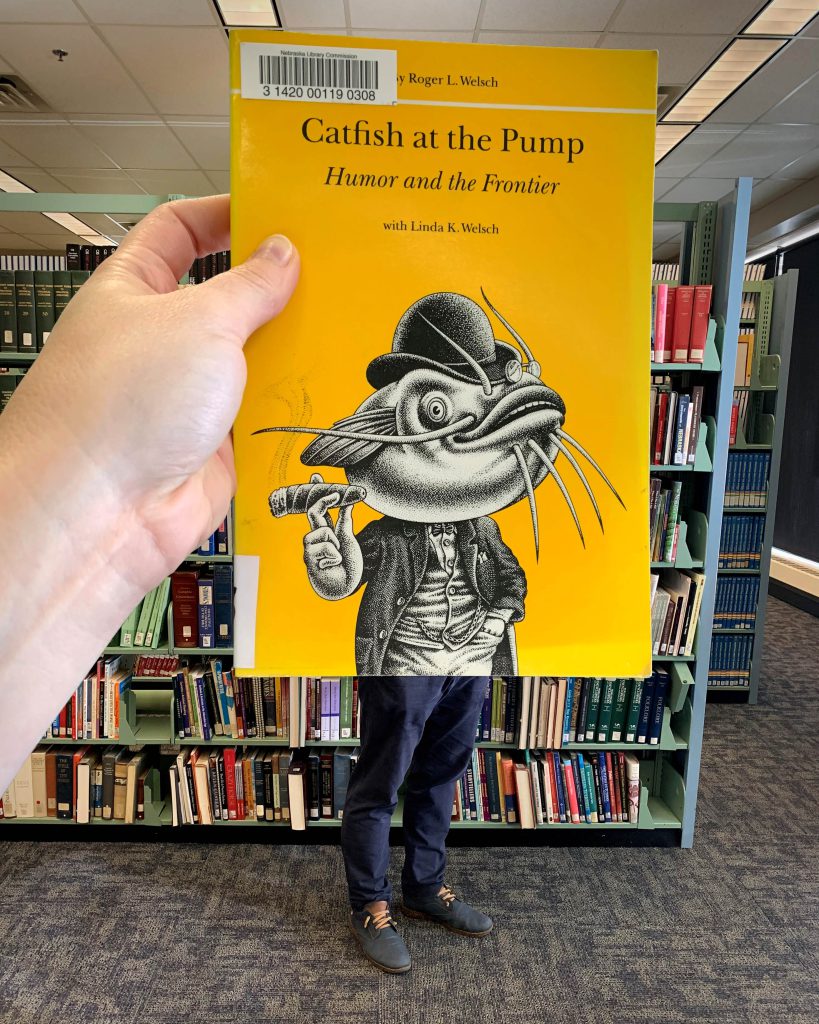
This week’s #BookFace is for a very special Nebraska author, known for his pioneer humor and wit, Roger Welsch. We wanted to take the time to highlight his many works in our various collections, like “Catfish at the Pump: Humor and the Frontier” by Roger L. Welsch and Linda K. Welsch (University of Nebraska Press, 1986), available as an NLC Book Club Kit. In total, NLC has eleven of Welsch’s titles in our Book Club Kit Collection. You can also find Welsch’s work through Nebraska OverDrive Libraries, we have copies of “Embracing Fry Bread: Confessions of a Wannabe”, “Why I’m an Only Child and Other Slightly Naughty Plains Folktales”, and “Wyoming Folklore: Reminiscences, Folktales, Beliefs, Customs, and Folk Speech” by Federal Writers’ Project.
“Were our forefathers liars? ‘You bet they were, ‘ says Roger Welsch, ‘and damned fine ones at that.’ From yellowed newspapers, magazines, and forgotten Nebraska Federal Writers’ Project files, well-known folklorist and humorist Welsch has produced a book to be treasured. Here are jokes, anecdotes, legends, tall tales, and lugubriously funny poems about the things that preoccupied the pioneer plainsman: weather extremes; soil quality; food and whiskey; an arkload of animals, including grasshoppers, bed bugs, hoop snakes, the ubiquitous mule, and some mighty big fish.”
―from the back cover
TBBS borrowers can request or download several Roger Welsch titles from the National Library Service BARD (Braille and Audio Reading Download) website. If you have high-speed internet access, you can download books to your smartphone or tablet, or onto a flash drive for use with your player. You may also contact your reader’s advisor to have the book mailed to you on cartridge.
Available on Duplication on Demand (physical cartridge) and download on BARD:
DB45458 Uncle Smoke Stories: Four Fires in the Big Belly Lodge of the Nehawka
DBC01987 It’s Not the End of the Earth, but You Can See It from Here: Tales of the Great Plains
DBC13621 Mister, You Got Yourself a Horse: Tales of Old-Time Horse Trading
Available on cartridge only:
DB00941 Love, Sex and Tractors: The Eternal Triangle DB01042 Forty Acres and a Fool: How to Live in the Country and Still Keep Your Sanity
Book Club Kits Rules for Use
- These kits can be checked out by the librarians of Nebraska libraries and media centers.
- Circulation times are flexible and will be based upon availability. There is no standard check-out time for book club kits.
- Please search the collection to select items you wish to borrow and use the REQUEST THIS KIT icon to borrow items.
- Contact the Information Desk at the Library Commission if you have any questions: by phone: 800/307-2665, or by email: Information Services Team
Find this title and many more through Nebraska OverDrive! Libraries participating in the Nebraska OverDrive Libraries Group currently have access to a shared and growing collection of digital downloadable audiobooks and eBooks. 189 libraries across the state share the Nebraska OverDrive collection of 21,696 audiobooks, 35,200 eBooks, and 3,964 magazines. As an added bonus it includes 130 podcasts that are always available with simultaneous use (SU), as well as SU ebooks and audiobook titles that publishers have made available for a limited time. If you’re a part of it, let your users know about this great title, and if you’re not a member yet, find more information about participating in Nebraska Overdrive Libraries!
Love this #BookFace & reading? Check out our past #BookFaceFriday photos on the Nebraska Library Commission’s Facebook page!
